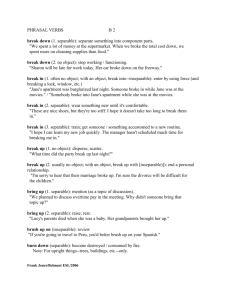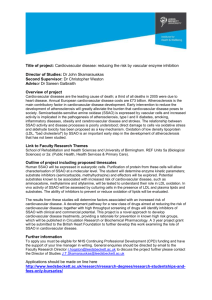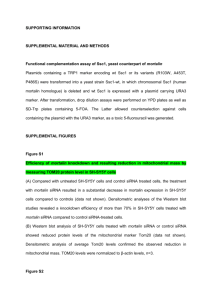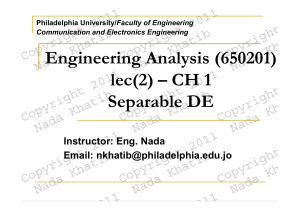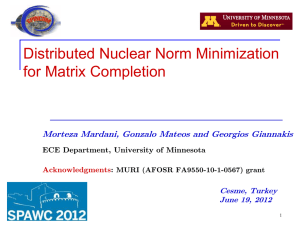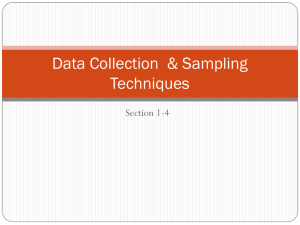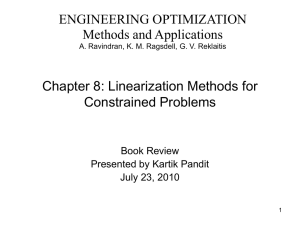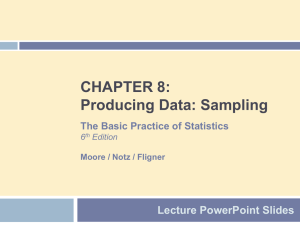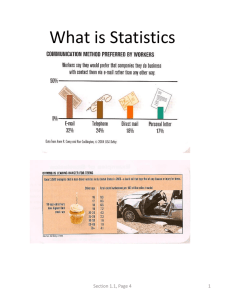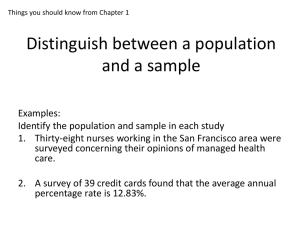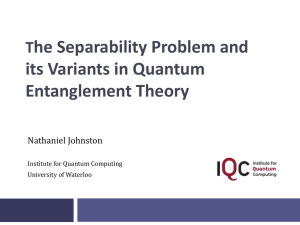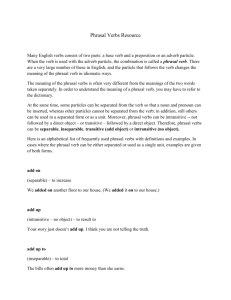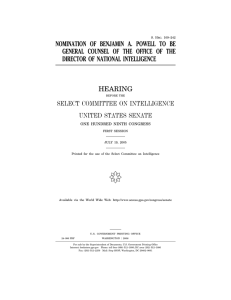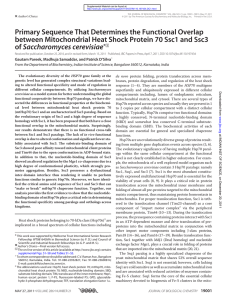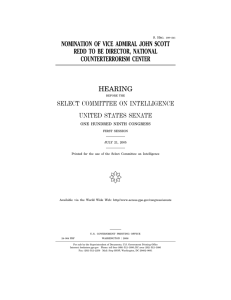Separable Approximation Of Ambient Occlusion
advertisement
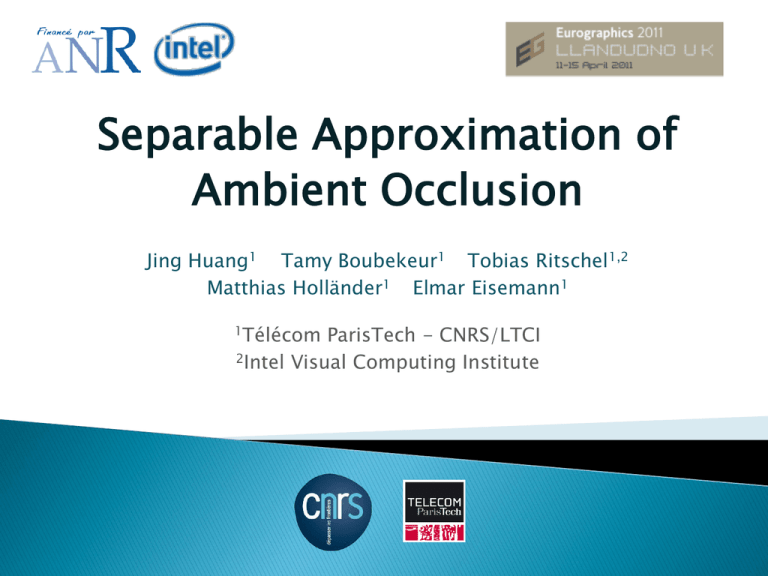
Separable Approximation of Ambient Occlusion Jing Huang1 Tamy Boubekeur1 Tobias Ritschel1,2 Matthias Holländer1 Elmar Eisemann1 1Télécom ParisTech - CNRS/LTCI 2Intel Visual Computing Institute Fast approximation of a subset of indirect lighting effects 2 3 AO = shadow created by ambient illumination Ref photo : Guangzhou - Cloudy Day Was first introduced by M. S. Langer & S. W. Zucker («Shape from shading on a cloudy day», 1994) Capturing surface variation using accessibilty shading by Gavin Miller («Efficient Algorithms for Local and Global Accessibility Shading», 1994) 4 Integral of Visibility all over the hemisphere 5 Improving the perception of volume, concavities & contact areas of 3D objects AO in Starcraft II. 6 Estimated by ray tracing Prohibitive for real time rendering 7 For Real Time Applications 8 SSAO Main idea: ◦ using the depth-buffer as a cheap, randomly accessible substitution for the actual scene’s geometry. ◦ Casting AO computation as a local filter in screen space CryEngine [Mittring 2007] 9 [Shanmugam and Okan 2007], [McGuire 2010] 10 ◦ Horizon-Based AO [BAVOIL 2008] depends on the elevation angle e 11 Accounts for «outside the view» occluders [Reinbothe 2009] 12 Can we go a step further ? ◦ SSAO already reformulated a 3D raytracing process into a 2D screen space layout Can we work in 1D ? Observation: SSAO looks like a local image filter. Idea: Propose a separable (2x1D) AO approximation instead of a full (2D) evaluation 13 14 15 16 With gaussian filter Original signal With bilateral filter 18 Mathematically not separable But convincing separable approximation [Pham 2005] 19 Separate AO sampling along 2 orthogonal axes in a 2-pass process Evaluation along each axis using any kind of SSAO ◦ Occlusion estimation (Crytek, HBAO, etc) ◦ Sampling (uniform, random, jittered, etc) Need spatially varying directions for removing directional banding artifacts Solution: Local Frame Randomization 20 Randomize the orientation of the local frame (axis pair) at each pixel Avoids banding artifacts. 21 Using different distribution pattern: Random Stratified sampling 1. Regular 2. Jittered Low-discrepancy sampling 1. Halton sequence 2. Hammersley sequence Random Regular Jittered Halton Hammersley 22 Regularly replicated basis pattern ◦ Between regular & irregular sampling Regular Pattern Interleaved Pattern 23 «Toasters» 24 Sampling 4 x 4 Boxfilter Results High Frequency Random AO in « Toaster’s feet » 4x4 Interleaved Advantage : easy to filter save memory 25 27 Size 5 11 21 Separable Crytek Vol. Obs HBAO [Mit07] [LS10] [BSD08] no 3.2ms 3.5ms 3.6ms yes 3.4ms 3.6ms 3.5ms no 13.9ms 14.8ms 15.0ms yes 5.8ms 5.9ms 6.0ms no 49.7ms 51.9ms 51.9ms yes 9.9ms 9.9ms 10.2ms Resolution 1024 x 768 GPU Nvidia GTX 480 28 Reference HBAO Separable Perceptual Difference in Lab space. [Yee 2004] Measured against the exact computation for each technique using [Mittring 2007] [BAVOIL 2008] 29 31 Inherited from the particular SSAO technique using to evaluate along the 2 axis ◦ Missed occluders (outside the frustum) Could be solved by voxelization [Reinbothe 2009] ◦ Over occlusion Could be solved by depth peeling [Ritschel 2009] 32 Separable Approximation of Ambient Occlusion ◦ Faster than complete evaluation ◦ Compatible with all SSAO methods ◦ No visible error Same principle can be applied to other screen-space rendering techniques 33 ANR Projects « Cecil » and « MEDIAGPU » European Network of Excellence « 3DLife » Help from Telecom ParisTech: Catherine Pelachaud, Bert Buchholz, Jean-Marc Thiery 34 Thanks Merci 谢谢 Danke Obrigado Gracias 35
